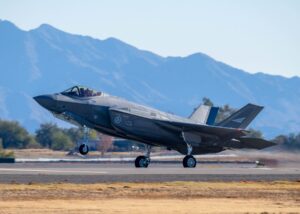
A potentially $6.6 billion three-year sustainment contract award on Sept. 13 to Lockheed Martin [LMT] for its F-35 fighter is a stepping stone to a possible performance-based logistics (PBL) contract revision next year, if the company meets cost per flight hour (CPFH), parts availability and full mission capable (FMC) goals. While past F-35 sustainment contracts evaluated Lockheed Martin on the aircraft's mission capable rates, the new sustainment contract is to judge the company on FMC rates and the on-time availability…














